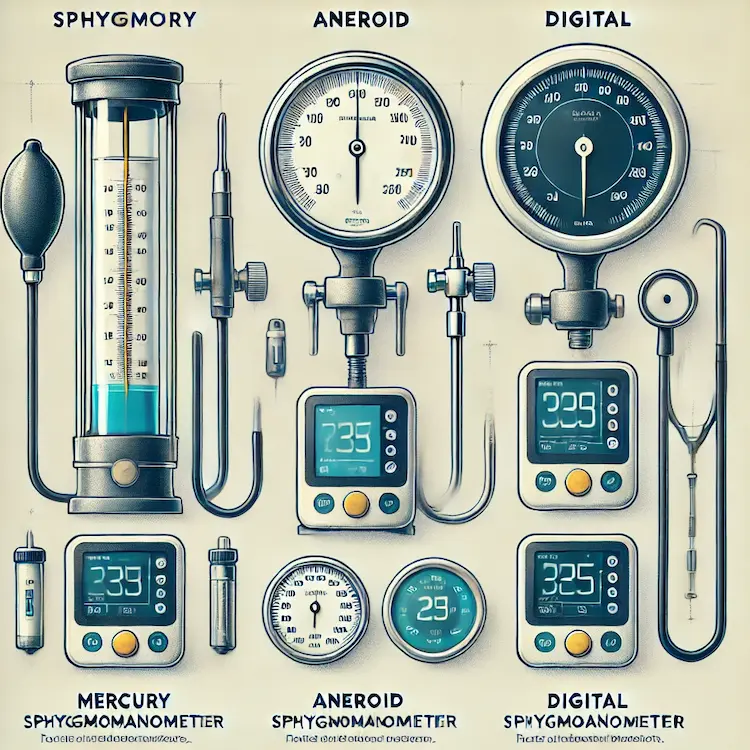Hypertension, commonly known as high blood pressure, is a global health crisis affecting millions. According to the World Health Organization (WHO), over 1.28 billion people worldwide suffer from hypertension, with many unaware of their condition. Left untreated, it significantly increases the risk of heart disease, stroke, and kidney failure.
A sphygmomanometer, often referred to as a “sphyg,” remains a crucial tool for diagnosing and managing hypertension. Understanding its role, alongside modern monitoring techniques, is vital in addressing the growing burden of high blood pressure.
This article explores the connection between sphygmomanometers and hypertension, the importance of regular blood pressure monitoring, the societal and health implications of the hypertension crisis, and the latest advancements in blood pressure measurement technology.
Understanding Hypertension
Hypertension is defined as a systolic blood pressure (SBP) of 130 mmHg or higher or a diastolic blood pressure (DBP) of 80 mmHg or higher, based on the latest guidelines from the American Heart Association (AHA).
Types of Hypertension
- Primary (Essential) Hypertension – The most common form, with no identifiable cause, but linked to genetics, age, and lifestyle factors.
- Secondary Hypertension – Caused by underlying conditions such as kidney disease, hormonal disorders, or medication side effects.
Key Risk Factors
- Unhealthy diet (high sodium, low potassium)
- Sedentary lifestyle
- Obesity
- Smoking and alcohol consumption
- Stress
- Genetics and family history
Complications of Untreated Hypertension
- Cardiovascular diseases (heart attack, stroke)
- Kidney damage
- Vision problems
- Cognitive decline and dementia

The Role of Sphygmomanometers in Hypertension Management
A sphygmomanometer is a blood pressure measurement device that consists of a cuff, a pressure gauge, and either a manual inflation mechanism (aneroid or mercury) or an automatic electronic system.
Types of Sphygmomanometers
| Type |
Description |
Advantages |
Disadvantages |
| Mercury Sphygmomanometer |
Uses mercury to measure pressure, considered the “gold standard” for accuracy. |
Highly accurate, long-lasting. |
Bulky, mercury toxicity risk. |
| Aneroid Sphygmomanometer |
Uses a mechanical gauge with a dial and a stethoscope. |
Portable, no mercury risk. |
Requires calibration, user-dependent. |
| Digital Sphygmomanometer |
Uses electronic sensors to measure BP, available in upper-arm and wrist models. |
Easy to use, automatic inflation, suitable for home monitoring. |
Can be less accurate if used incorrectly. |
Which Type is Best?
- For Clinical Use: Mercury sphygmomanometers are still used in some hospitals due to their high accuracy.
- For Home Monitoring: Digital devices are preferred for their ease of use and ability to track readings over time.
How to Properly Measure Blood Pressure
- Sit calmly for 5 minutes before taking a reading.
- Ensure proper cuff placement (around the upper arm, level with the heart).
- Avoid caffeine, exercise, or smoking 30 minutes before measuring.
- Take multiple readings at different times of the day for accuracy.
Hypertension: A Global Public Health Crisis
Alarming Statistics
- Only 42% of adults with hypertension are diagnosed and treated.
- Hypertension is responsible for 7.5 million deaths annually (12.8% of all global deaths).
- It is the leading risk factor for stroke and heart disease.
Economic Burden
- High healthcare costs for hypertension management and related complications.
- Productivity loss due to hypertension-related disabilities and premature deaths.
Societal Impact
- Increased burden on healthcare systems due to rising cases.
- Higher risks for marginalized populations with limited healthcare access.
- Mental health concerns due to the stress of chronic illness.
Modern Approaches to Blood Pressure Monitoring
1. Ambulatory Blood Pressure Monitoring (ABPM)
- 24-hour continuous monitoring using a portable device.
- Provides a more accurate assessment of BP fluctuations.
2. Home Blood Pressure Monitoring (HBPM)
- Recommended for better long-term control.
- Devices like the Omron X7 Smart allow for digital tracking via smartphone apps.
3. Wearable and Smart Technology
- Smartwatches (Apple Watch, Samsung Galaxy Watch, Fitbit) now feature BP tracking.
- Continuous BP monitoring can provide real-time alerts for abnormal readings.
Practical Tips for Managing Hypertension
1. Lifestyle Changes
- Reduce sodium intake (below 2,300 mg/day).
- Increase potassium intake (bananas, avocados, leafy greens).
- Exercise regularly (at least 150 minutes per week).
- Maintain a healthy weight.
- Quit smoking and limit alcohol.
2. Medication and Treatment
- Diuretics (reduce excess fluid).
- Beta-blockers (slow heart rate).
- ACE inhibitors (relax blood vessels).
- Calcium channel blockers (prevent arteries from tightening).
3. Regular Monitoring and Medical Checkups
- Monitor BP at home at least twice a day.
- Consult a doctor if readings remain high despite lifestyle changes.

Conclusion
The hypertension crisis is a significant public health challenge, but regular monitoring, lifestyle adjustments, and medical interventions can help manage and prevent complications. Sphygmomanometers remain a critical tool in diagnosing and controlling blood pressure. As technology advances, digital and smart monitoring solutions provide improved accessibility and convenience for patients worldwide.
Key Takeaways
- Hypertension affects over 1.28 billion people worldwide and is a leading cause of heart disease and stroke.
- Sphygmomanometers are essential for diagnosing and managing high blood pressure.
- Modern blood pressure monitoring techniques like ABPM, HBPM, and smart devices enhance tracking accuracy.
- Lifestyle changes (diet, exercise, stress management) and medications play a vital role in controlling hypertension.
- Regular monitoring is crucial to prevent long-term complications.
Actionable Recommendations
- Invest in a reliable digital BP monitor for home use.
- Adopt a heart-healthy lifestyle by reducing sodium, exercising, and quitting smoking.
- Schedule regular medical checkups to monitor your blood pressure trends.
- Stay informed about the latest advancements in blood pressure monitoring technology.

